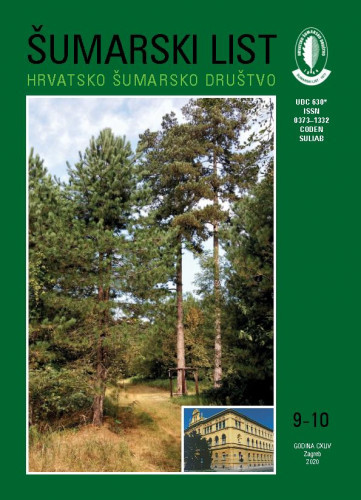Park kralja Petra Krešimira IV. u Zagrebu spomenik je parkovne arhitekture i jedan od povijesno važnih, starih parkova u gradu Zagrebu. Radi utvrđivanja sadašnjega stanja drvenastih biljaka u parku, napravljena je dendrološka analiza te je učinjena usporedba sadašnjega stanja dendroflore sa stanjem iz 1962. i 1995. godine. Biljke su determinirane u razdoblju od ljeta 2018. do ljeta 2019. godine, a u radu su analizirani sljedeći podaci: brojnost pojedinih svojti (vrsta, podvrsta, varijeteta, križanaca i kultivara), pripadnost porodici, areal, habitus, trajnost listova, boja cvjetova, vrijeme cvjetanja, plodovi te broj autohtonih i alohtonih svojti. Ukupno su zabilježene 122 svojte raspoređene unutar 36 porodica. Od toga sedam svojti pripada golosjemenjačama, a ostalo su kritosjemenjače. Broj svojti se povećao za 29 u odnosu na 1995. godinu, kada ih je bilo 93, odnosno za 44 u odnosu na 1962. godinu, kada ih je bilo 78. Danas, 40 od navedenih 93 svojte iz 1995. godine više nije prisutno u parku, kao ni 40 svojti zabilježenih 1962. godine. Autohtonih svojti je 28, a od alohtonih najviše je azijskih i sjevernoameričkih. Kao posebno vrijedni primjerci starog, velikog drveća svojom pojavom ističu se stabla ginka, hibridnih platana, virdžinijskoga draguna i mandžurskoga plutnjaka, koja su u parku od njegova osnutka i čine važan dio njegova vizualnog identiteta.; The Park Kralj Petar Krešimir IV was constructed in the period from 1937 to 1938, and was the first modern city park in the country. The park was divided into two parts by a road. The southern part of the park was designed as a “more naturally” shaped space dominated by the central grassland, whereas the north, smaller unit, was divided into three parts: a flower garden for grown-ups, the central parterre, and a children’s playground. Despite it being a large and important traffic junction nowadays, due to its lush vegetation it managed to preserve its intimate and meditative character used by many citizens to “escape” into the nature. In order to establish the current status of the woody plants on the territory of the Kralj Petar Krešimir IV Park in Zagreb, a dendrological analysis was performed and the current status of woody plants was compared to the status from 1962 and 1995. The plants were identified in the period from the summer of 2018 to the summer of 2019, and the paper includes an analysis of the following data: the number of individual taxa (species, subspecies, varieties, hybrids and cultivars), family affiliation, area, habitus and leaf duration, color of flowers, time of flowering, fruits and the number of autochthonous and allochthonous taxa. There were a total of 122 taxa recorded in the garden, distributed within 36 families: 83 species (six gymnosperms and 77 angiosperms), two subspecies (both angiosperms), 30 cultivars (one gymnosperm and 29 angiosperms), six hybrids (all angiosperms) and one variety (angiosperm). The genera with the most taxa are: Acer L. - maples (9), Prunus L. – plums (6), Berberis L. – holly grapes and Lonicera L. – honeysuckles (5), and Cornus L. – dogwoods and Spiraea L. – bridal wreaths (4). The number of taxa increased by 40 compared to 1962, and by 29 compared to 1995. There are 28 autochthonous taxa, and of the allochthonous ones, most are Asian and North American.
Sažetak

 Šumarski list : znanstveno-stručno i staleško glasilo Hrvatskoga šumarskog društva = journal of the Forestry Society of Croatia = Zeitschrift des Kroatischen Forstvereins = revue de la Societe forestiere Croate : 144, 9/10(2020) / glavni urednik Josip Margaletić.
Šumarski list : znanstveno-stručno i staleško glasilo Hrvatskoga šumarskog društva = journal of the Forestry Society of Croatia = Zeitschrift des Kroatischen Forstvereins = revue de la Societe forestiere Croate : 144, 9/10(2020) / glavni urednik Josip Margaletić.